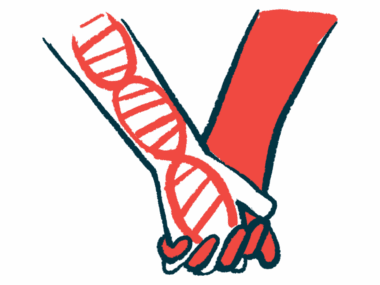Proteins in Cerebrospinal Fluid May Be Rett Syndrome Biomarkers: Study
Samples were analyzed from mouse and rat models, and from Rett patients
Written by |

A set of proteins in the cerebrospinal fluid (CSF) — the fluid that flows around the brain and spinal cord — are present in unusual amounts in Rett syndrome, according to an analysis of samples from rats, mice and a small group of Rett patients.
Researchers identified two particular proteins, one involved in fat transport and the other in nerve cells growth, as potential CSF biomarkers for Rett that would allow it to be discriminated from a related neurodevelopmental disorder.
The study, “Convergent cerebrospinal fluid proteomes and metabolic ontologies in humans and animal models of Rett syndrome,” was published in iScience.
Rett syndrome is chiefly caused by mutations in the MECP2 gene on the X chromosome and which codes for a protein of the same name. The protein regulates how genes important for brain development and function are read.
Few studies have investigated how MECP2 mutations affect the brain proteome or the entire protein content within brain cells.
Assessing the composition of the CSF can inform about potential disease biomarkers. While this type of analysis has been done with Alzheimer’s disease, researchers said it hasn’t been known “if a neurodevelopmental disorder, such as Rett syndrome, reproducibly and distinctively modifies the CSF proteome to predict disease mechanisms and biomarkers of disease.”
Rett’s effect on CSF proteome
To answer this, a team led by researchers at the Emory University analyzed and compared the proteome of nerve cells (neurons) grown in a dish carrying a mutated MECP2 gene with cells that had the healthy gene (wild-type). The analysis was done using a highly precise technique called tandem mass tagging mass spectrometry.
The researchers then analyzed more complex in vivo systems (in living animals) and analyzed the protein content of the CSF in rat and mouse models of Rett genetically engineered to lack the Mecp2 gene (the rodent analog of MECP2).
CSF samples from 12 girls with Rett (age range 2–10) were also used. The girls had participated in a Phase 1 trial to assess the safety and effectiveness of mecasermin, a lab-made version of the hormone IGF-1, which manages the effects of growth hormone. CSF samples were collected before and after treatment.
“We sought to identify secreted proteins sensitive to MECP2/ Mecp2 gene defects,” the researchers wrote.
The analyses across the three different species revealed a common set of proteins with altered levels. The top hits included high-density lipoproteins (HDL, the so-called “good cholesterol”) as well as proteins belonging to mitochondria, cells’ powerhouses.
Additional altered proteins were linked with the metabolism of pyruvate and amino acids, proteins’ building blocks, and with the complement system (a set of more than 50 blood proteins that form part of the body’s immune defenses) and synapses, the sites where nerve cells communicate. Levels of the VGF protein, thought to have a role in energy balance, also were altered.
Using lab-grown neurons, the investigators confirmed mitochondrial impairment in cells with no MeCP2 protein. Reintroducing a healthy version of the gene rescued these impairments.
The researchers then used a different approach to measure the absolute levels of proteins identified as changing with Rett, confirming the changes in the HDL and complement proteins, as well as in VGF, were “robustly and significantly reduced in the CSF of Mecp2-null male mice.”
Next, they assessed whether the proteins could serve as biomarkers of Rett syndrome and allow it to be discriminated from another X-linked neurodevelopmental disorder called CDKL5 deficiency disorder.
Comparing the CSF proteome of mouse models of CDKL5 deficiency disorder to Rett revealed a minimal overlap between significantly altered proteins, supporting the biomarker potential of the proteins identified in Rett CSF samples.
“Of the analytes identified in our studies, we think the expression of APOA1 [the major protein component of the HDL family] and VGF are likely the best candidates for CSF biomarkers of disease,” the researchers wrote.
They also confirmed the proteins identified as potential biomarkers were expressed in human neurons and glial cells, whose main function is to support and provide nutrients to neurons.
Overall, “we propose that Mecp2 mutant CSF proteomes and ontologies inform putative mechanisms and biomarkers of disease,” the researchers wrote. “We suggest that Rett syndrome results from synapse and metabolism dysfunction.”






